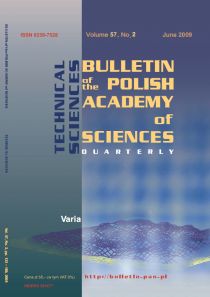POLISH ACADEMY of SCIENCES
TECHNICAL SCIENCES

| BULLETIN
of the
POLISH ACADEMY of SCIENCES TECHNICAL SCIENCES |
 |
|||
|---|---|---|---|---|
| Volume
60, Issue 1, March 2012
|
||||
| Issue Index | Authors Index | Scope Index | Web Info | |
|
|
||||
| Aims&Scope, Subscription | Editors | Authors' guide | to read PDF files | mirror: http://fluid.ippt.gov.pl/~bulletin/ |
| pp 19 - 23 |
|---|
|
Vacuum microdevices |
|---|
| T. GRZEBYK and A. GORECKA-DRZAZGA |
| In the paper MEMS-type microsystems working in vacuum conditions are described. All the benefits and drawbacks of vacuum generated in microcavities are discussed. Different methods are used to produce vacuum in microcavity of MEMS. Some bonding techniques, sacrificial layer method or getter materials are presented. It is concluded that the best solution would be to invent some kind of vacuum micropump integrated with MEMS structure. Few types of already existing vacuum micropumps are shown, but they are not able to generate high vacuum. As the most promising candidate for miniaturization an orbitron pump was selected. The working principle and novel concepts of its construction are described. The most important part of the micropump, used for gas ionization, is a field-emission electron source. Results of a research on a lateral electron source with gold emissive layer for integration with a micropump are presented. |
| Key words: |
|
vacuum microsystems, miniature vacuum pump, field-emission electron source, MEMS |
|
|
| Issue Index | Authors Index | Scope Index | Web Info |
|---|---|---|---|
|
|
|||
| Aims&Scope, Subscription | Editors | Authors' guide | to read PDF files |
| Copyright ® Bulletin of the Polish Academy of Sciences: Technical Sciences |
|---|